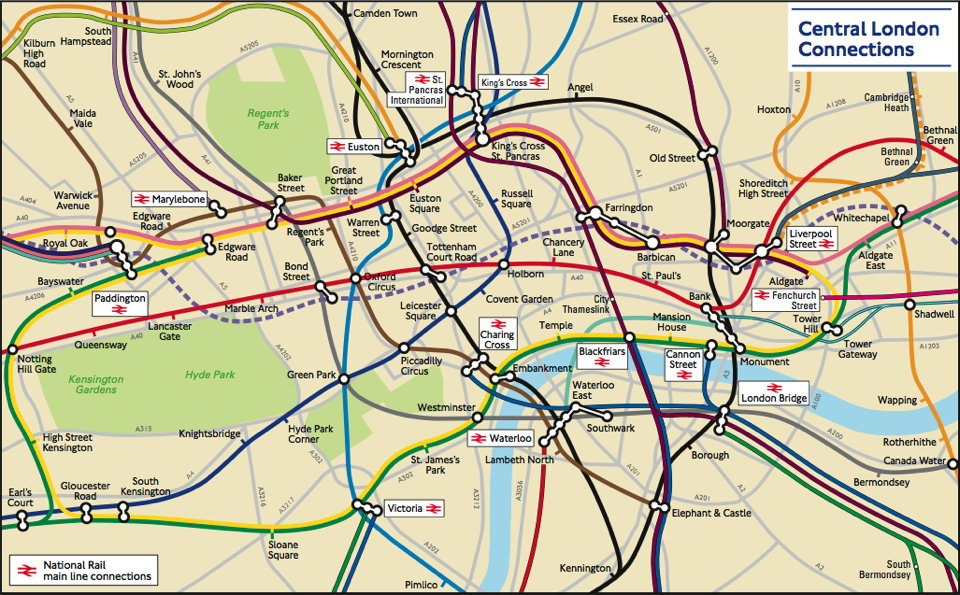
Complaints that London’s Tube map has gotten too complicated are not new. So it’s not too surprising that Transport for London’s decision to add Thameslink rail services to the Tube map as of next month—temporarily, as a means of illustrating alternative travel options in the age of social distancing—is generating some heat. Thameslink already appears on TfL’s Tube and Rail map, but adding it to the Tube map proper is in some quarters seen as the final straw. Jonn Elledge at On London:
Once a design classic, the map has been ugly, and getting uglier, for a while. The rot started to set in with the baffling decision to show the fare zones using a series of irregular grey polygons that make it look like the familiar shape of the Tube network had been painted against the backdrop of the sort of artwork you’d find lining the corridors of a Gatwick Airport hotel sometime in the late 1980s.
But the bigger problem is that Transport for London have thrown more and more services onto the map without any apparent consideration for what it might need to change in order to accommodate them. Most of the map is still given over to the northern half of London, even though a growing share of the services it shows (the Overground, Tramlink, now Thameslink) are south of the river.
Diamond Geezer has some specific questions about what the map is doing. On YouTube, Geoff Marshall is more positive.
The new map isn’t up on the TfL site yet, but can be seen here.
Previously: Has the Tube Map Become Too Complicated?







